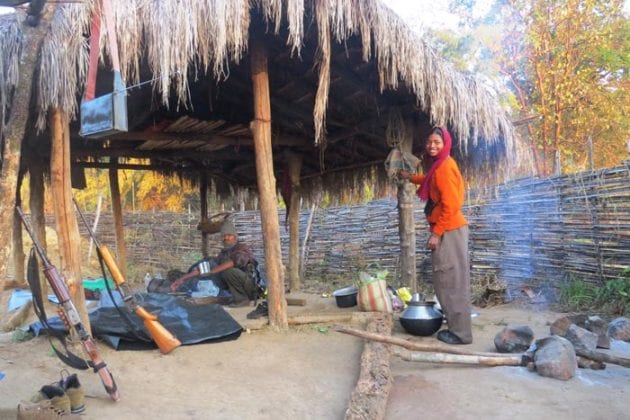The life of a Maoist: Violence and deceit are a part of the guerrilla life
In the Maoist camp, while marriage within the fold is allowed, a man or a woman can propose to his or her partner only two years after joining the party.
 1 / 9
1 / 9A makeshift night halt for a Maoist squad inside the Dandakaranya forest. The rebels live a spartan life, with food and tobacco strictly rationed. Intoxicants, including local tribal brews, are banned. (Source: Express photo by Photos: Ashutosh Bhardwaj)
You have exhausted your
monthly limit of free stories.Read more stories for free
with an Express account.Already have an account? Sign InUse code DIWALI10 for 10% off on your Express Edge plan.Already a subscriber? Sign InUse code DIWALI10 for 10% off on your Express Edge plan.This content is exclusive for our subscribers.Subscribe now to get unlimited access to The Indian Express exclusive and premium stories.Already a subscriber? Sign In- 2 / 9
The Maoist insurgency is a phenomenon few have the will to grasp. Several thousands of armed men and women live in the forests of central India spearheading a revolutionary struggle which is reaching its 50th year soon. (Source: Express photo by Ashutosh Bhardwaj)
- 3 / 9
The state accuses Maoists of indoctrinating tribals, but it overlooks the fact that it has not convinced them that it can protect their interests better than the Maoists. (Source: Express photo by Ashutosh Bhardwaj)
- 4 / 9
Always on the move to elude the enemy, a guerrilla rarely spends consecutive nights at a single place. (Source: Express photo by Ashutosh Bhardwaj)
- 5 / 9
A loaded rifle is slung on the shoulder all the time; a woman carries one even when she goes for a bath in a river. (Source: Express photo by Ashutosh Bhardwaj)
- 6 / 9
Eight minutes is what the Maoists get to pack up and move. Their belongings — a plate, a few clothes and basic toiletries — all fit into one pithoo bag. (Source: Express photo by Ashutosh Bhardwaj)
- 7 / 9
Villagers in Bastar carry countrymade muzzle-loading guns called bhar-maar for hunting. The police often round up locals carrying the gun even though the unwieldy weapon is not a part of the Maoist armoury. (Source: Express photo by Ashutosh Bhardwaj)
- 8 / 9
A rebel fetches water for her camp. Comprising around 40 per cent of the cadre, women form the spine of the insurgency. All responsibilities are shared equally by men and women; the latter get special food rights. (Source: express photo by Ashutosh Bhardwaj)
- 9 / 9
A memorial for Mangal, killed in an encounter a few years ago, outside the Bali Bera village. “Villagers erased his name as they feared the police,” says his sister Simri. (Source: Express photo by Ashutosh Bhardwaj)